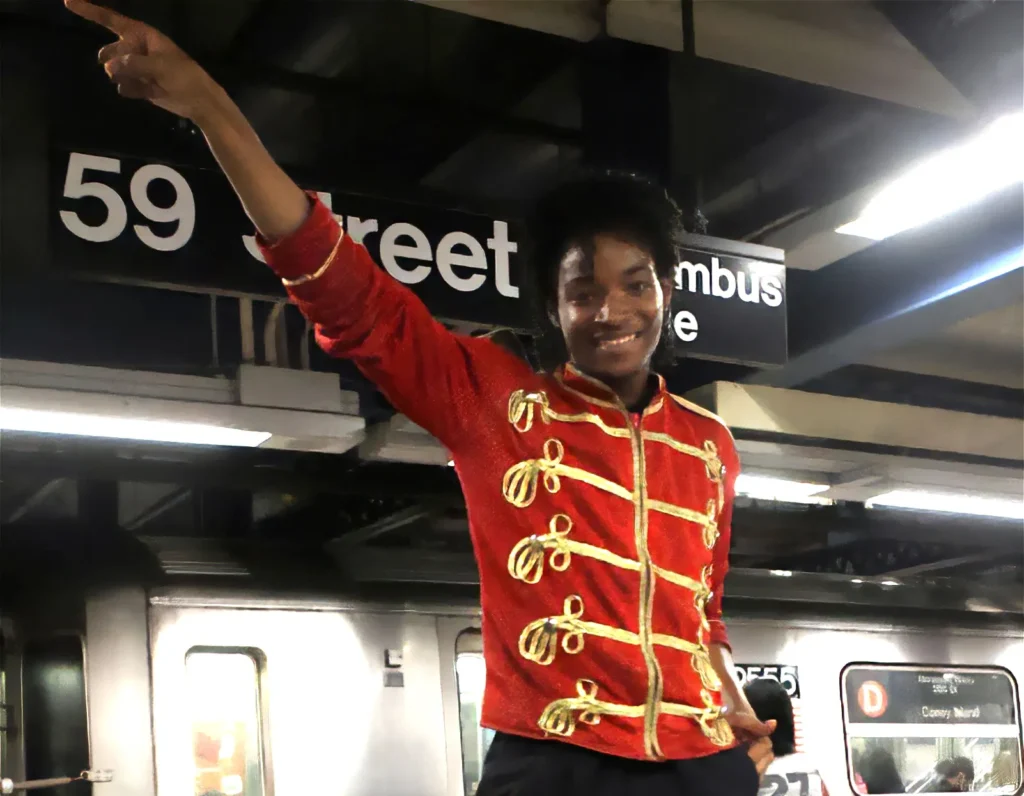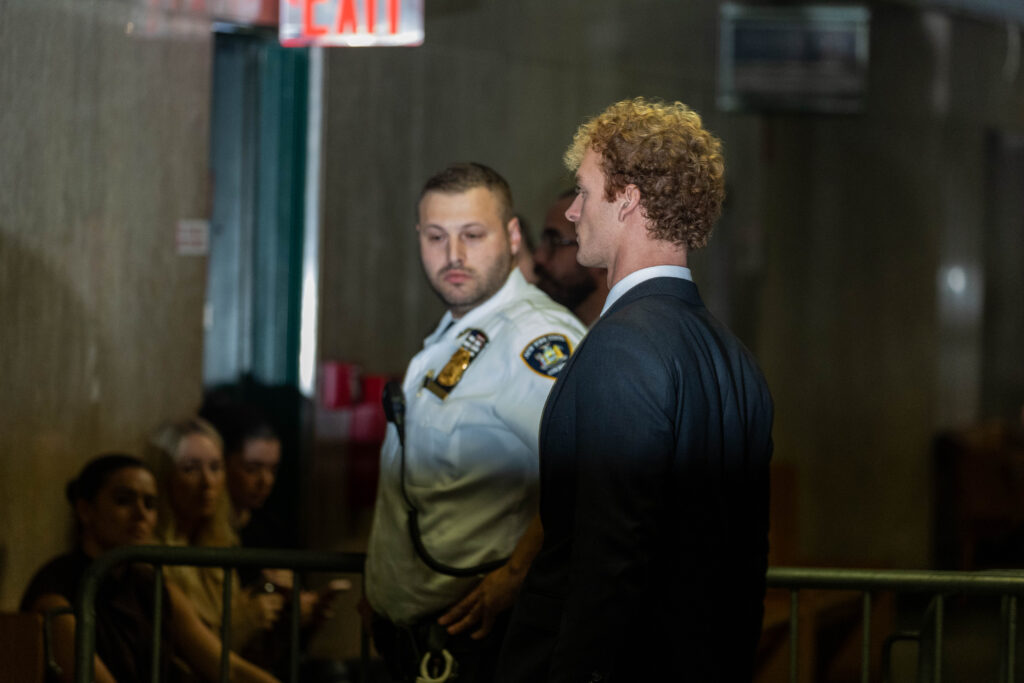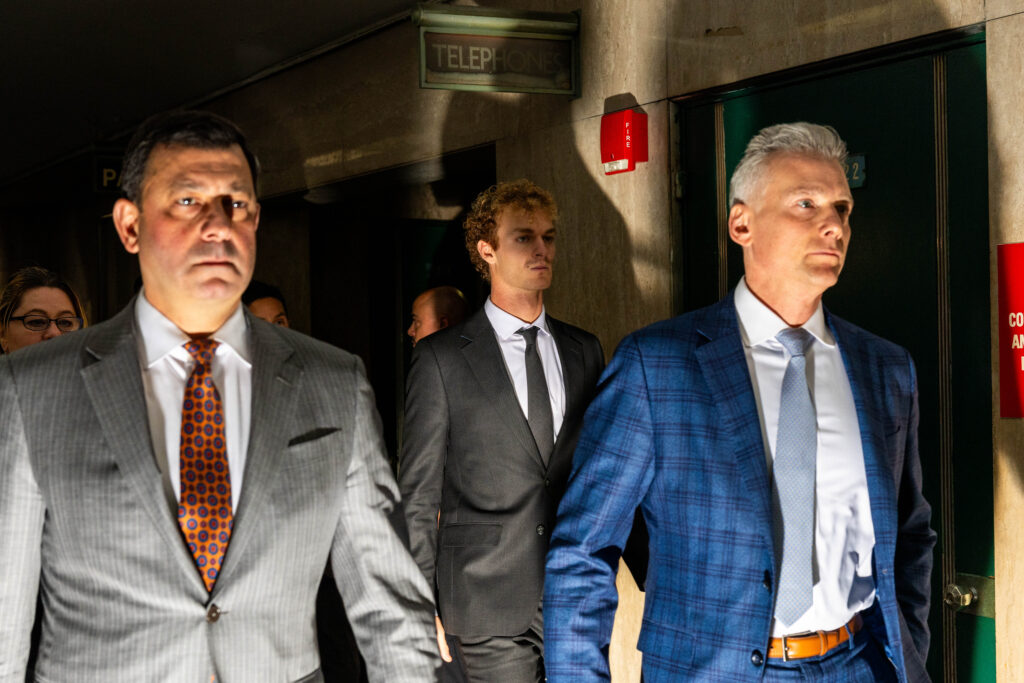Jury in Penny Trial Asks To Hear Charges Again, Suggesting Disagreement About Whether Marine Committed a Crime in Death of Michael Jackson Impersonator
The second full day of deliberations ended without a verdict.

The jury has still not reached a verdict in the manslaughter trial of Daniel Penny, the Marine veteran who placed a homeless Michael Jackson impersonator, Jordan Neely, in a chokehold on a New York subway last year. Instead, it asked to review more evidence on Thursday, and a readback of the definitions of the charges. Meanwhile, Neely’s father, Andre Zachery, filed a lawsuit against Mr. Penny in civil court.
“We, the jury, request the Vazquez and the Rosario videos,” the first note on Thursday read. The note came shortly after two court reporters had finished reading testimony back to the jurors, given by the city medical examiner, Dr. Cynthia Harris, who performed the autopsy on Neely and ruled his cause of death “compression by the neck” – a conclusion opposed strongly by the defense whose expert found that Neely died from a combination of factors.
The jury had already asked to see the so-called Vazquez-video, which was recorded by the freelance journalist Alberto Vazquez on Wednesday. But they wanted to see it again. During opening arguments, prosecutors described the video as “the most critical piece of evidence at this trial.” The recording captures the moment Mr. Penny lies on the subway floor, his arm wrapped around Neely’s neck. He keeps Neely in the chokehold for about six minutes. Two other men are seen trying to help Mr. Penny restrain Neely, who is moving, at first, attempting to break free. At about minute three, Neely’s body appears to go limp. When officers arrived at the scene, they found Neely to be unresponsive. He was pronounced dead at the hospital an hour later.
The jury had also asked for another video, taken by Ivette Rosario, who was a high school student at the time. Ms. Rosario’s video shows the struggle between Mr. Penny and Neely from a different angle. It also shows Ms. Rosario filming her own hand, which is shaking, and how she starts to run down the platform at the subway station in fear that Neely may break free and get up from the floor and attack someone. “Let’s go,” Ms. Rosario screams at her friend, as she starts to run.

Ms. Rosario testified that Neely entered the subway and began shouting at passengers that he was thirsty, hungry, ready to go to prison, and ready to die. His tone, Ms. Rosario said, was so frightening that she buried her head in her friend’s chest. That’s why, she testified, she did not see how and when Mr. Penny grabbed Neely from behind, placing him in a chokehold and bringing him down to the floor. Once the train stopped at the next station, and the doors opened, Ms. Rosario began filming, capturing how the two men, the veteran and the Michael Jackson impersonator, lay entangled on the floor of the subway car. When she saw Neely move, she panicked and started running. Then she called the police. During her video the voice of a female passenger can faintly be heard, telling Mr. Penny to let Neely go, or he will kill him.
Most importantly, the video depicts the chokehold from another angle. The defense has argued that Mr. Penny was not applying pressure the entire time, while the prosecution alleges that he held Neely “way too long.”
About an hour later, at around noon, the jury sent another note, asking the presiding judge, Maxwell Wiley, to read back the definitions of the charges against Mr. Penny, specifically including those of “recklessness and negligence.” The note further asked Judge Wiley to read these definitions “more than once, two times” and if the jurors could possibly receive them in writing.
The jury instructions are, as are many aspects of this case, rather challenging and complicated. Judge Wiley called the jury into the courtroom, and tried to read as loudly, slowly and clearly as possible.

“Under our law,” he began, “a person is guilty of manslaughter in the second degree when that person recklessly causes the death of another person. Period.” He paused. “Let’s start with the term recklessly.”
“A person acts recklessly with respect to a death, when that person engages in conduct which creates or contributes to a substantial and unjustifiable risk that another person’s death will occur, and when he or she is aware of and consciously disregards that risk,” the judge went on.
In Mr. Penny’s case that means, did Mr. Penny’s chokehold “create” or “contribute” to Neely’s death? According to the prosecution, the chokehold “created” or caused the death, and Mr. Penny was acting recklessly, because having been trained in the Marines, he knew the “risk” chokeholds entail, and he “consciously” ignored them, because, as the prosecution has argued, he “didn’t recognize Neel’s humanity.”
The defense disagrees with the prosecution’s medical arguments, saying that there is enough reasonable doubt, even with the video footage, about the amount the pressure Mr. Penny was exerting on Neely’s neck. But the defense’s own expert’s testimony may be problematic. The forensic pathologist, Satish Chundru, who was called by the defense called, testified that Neely’s death was caused by several factors, and as one of them he listed the struggle with Mr. Penny: in that sense, Mr. Penny’s actions “contributed” to the death.

And even if the jury were to dismiss this charge, they must consider, the lesser of the two counts, criminally negligent homicide, which requires the defendant “fails to perceive” the risk that caused the death. Regarding this case, the question concerns whether Mr. Penny was aware that holding a chokehold could lead to fatal injuries.
In terms of potential length of time in prison for a convict of these offenses, second-degree manslaughter carries a maximum sentence of fifteen years while criminally negligent homicide has a maximum of four years. In both cases, the judge could decide to issue probation and not send the defendant to prison at all.
But Mr. Penny is also pleading “justification,” also known as self-defense, or the defense of others, arguing that he was protecting himself and other subway riders from Neely, who was making violent threats. The prosecution has to prove that the “substantial” risk of death Mr. Penny ignored was not “justified.”
That the jury asked to hear the charges again could suggest that they have settled on the facts and are trying to see which, if any, crime fits the facts they’ve tentatively found. Or, it could be a single juror asking for these readbacks. Unlike with the verdict, which has to be unanimous, the jury doesn’t have to all agree to ask for a readback. One person alone has that power.

The defense struck a small victory when the discussion came to providing the jury, as they had asked, with written definitions. The judge was going to send the jury only the written definitions about recklessness and negligence, but the defense attorney asked him to include the definitions of “justification” as well.
“We want to send part two in its totality,” defense attorney Thomas Kenniff told the judge, referring to the jury instructions. “Justification is an element of this crime.”
By 4:30 pm on Thursday, the jury had not yet rendered a verdict. But even if the jury returns and finds Mr. Penny not-guilty of both charges, the fight is not yet over.
On Wednesday, Neely’s father, Andrew Zachery, filed a lawsuit in civil court, as first reported by the New York Post, “wherefore, the plaintiff demands judgment awarding damages.” In other words, Mr. Neely is suing Mr. Penny for monetary damages. According to various media reports, Neely and his father were estranged. Neely’s mother was murdered in 2007 by her boyfriend, who stuffed her body in a suitcase and left it by the Henry Hudson Parkway.
Deliberations will continue on Friday morning.

